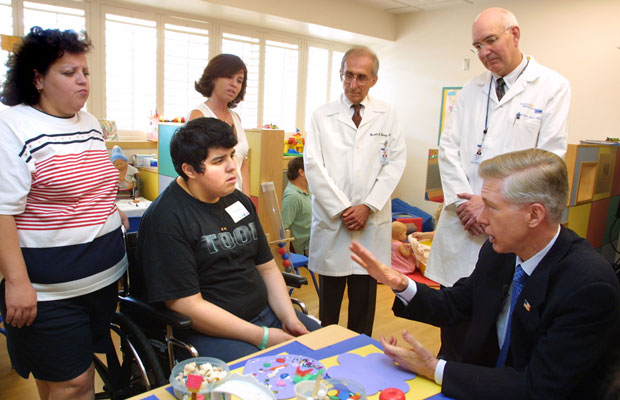This Day in Labor History: September 23, 2002

On September 23, 2002, California governor Gray Davis signed the California Family Rights Act, the first paid family leave law in American history. This relatively small but still significant increase in the American safety net is a symbol of just how limited the American welfare state is and how difficult it is to even come to close to matching that of other western nations.
The United States is the only industrialized nation to not offer mothers any paid leave when they have a child. This is totally bonkers. But nonetheless, it reflects the deep misogyny and pro-capitalist beliefs that have infected this nation from its beginning. The struggle to just get the Family and Medical Leave Act passed and signed in 1993, a law that only provided limited unpaid leave which probably a majority of parents cannot take, was depressing, and this for a expansion of the welfare state that didn’t even give workers any money and thus only cost employers the inconvenience of finding someone to cover for the parent.
How bad is the United States? As of 2007, 163 nations offered paid leave for mothers, at least. The U.S. is not one of those 163 nations. 76 nations have protected rights for women to breastfeed. Not the U.S. It’s not better for other sorts of worker benefits. At least 96 nations mandate paid vacation and 84 nations have mandated workweek maximums, but not the U.S. And the cost of child care is vastly more than nearly every nation in the world (if not in fact every single nation), dragging millions of people a year toward poverty. These are all solvable problems. Yet we do not solve them or even take steps ahead to do so.
As has frequently been the case since California turned relatively blue, the state was the leader on trying to improve the situation for parents. More specifically, California unions made it happen. The California Labor Federation, which is the state-level AFL-CIO, was highly interested in fighting for policies that would help women workers, especially low-wage women, which it rightfully saw as its future membership. It had already led successful fights at the state legislature for disability leave for pregnant women and for family sick leave.
In fact, unions have led the fight to expand family leave and childcare policies around the nation, winning some battles even in states such as Georgia and Oklahoma that created free preschools for 4-year-olds by the early 2000s. California workers already had relatively generous paid leave policies before this. In 1999, unions played a key role in creating the Work and Family Coalition that brought together the biggest unions and regional labor federations with child advocacy organizations for a battle to expand funding and access for paid leave at the state level. And of course, they operated in an overall favorable political climate that made the passage of something pretty far beyond anything at the national level possible. In 1999, Davis had signed an expansion to the state’s SDI benefits, opening the door for that program to be used for family leave policies.
One of the ways that the political climate made all this work was the significant level of immigrant rights organizations in California, for whom a law like this meant a lot. The Asian Law Caucus and the Legal Aid Society-Employment Law Center for instance started training unions on these issues and developed a hotline for workers with family leave problems to call in and report on them. The main unions that led the way on what became the California Family Rights Act was SEIU, AFSCME, UFCW, and the Amalgamated Transit Union (ATU). These were the usual unions to press for broader social policies and the usual unions to be relatively indifferent to these issues stayed out of it.
The CFRA gave parents up to six weeks of partial pay to care for a newborn or a sick family member, including aging parents. The law was designed as an extension to the state’s disability pay program, established back in the 1940s. But it was not a sure thing Davis would sign it. The tech bubble bursting and the resulting economic fallout made Davis worry about reelection and he didn’t want to anger employers. Plus Davis was at best a squishy centrist that so often was puked up by the Democratic Party in this period. The Chamber of Commerce was of course furious about the bill, since it hates everything that would make the nation a fairer place. Moreover, the entire funding for this came from employee contributions. It cost employers not a cent. They still hated it. It took him a month to sign the bill, but finally he did.
In the aftermath, progressives have tried to get a national bill passed. For years, Rosa DeLauro and Kirsten Gillibrand have sponsored a similar bill at the federal level but of course it goes nowhere because Republicans don’t want workers to have leave for families. Makes sense since Republicans hate families, workers, and dignity on the job. As of 2019, only Rhode Island, New York, New Jersey, Washington, Massachusetts, and D.C. have joined California to have paid family leave policies, though momentum is slowly growing.
I borrowed from Netsy Firestein and Nicola Dones, “Unions Fight for Work and Family Policies–Not for Women Only,” in Dorothy Sue Cobble’s edited collection, The Sex of Class: Women Transforming American Labor, published by Cornell University Press in 2007, to write this post.
This is the 330th post in this series. Previous posts are archived here.


